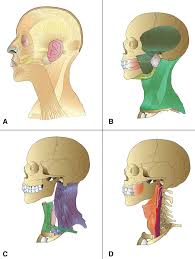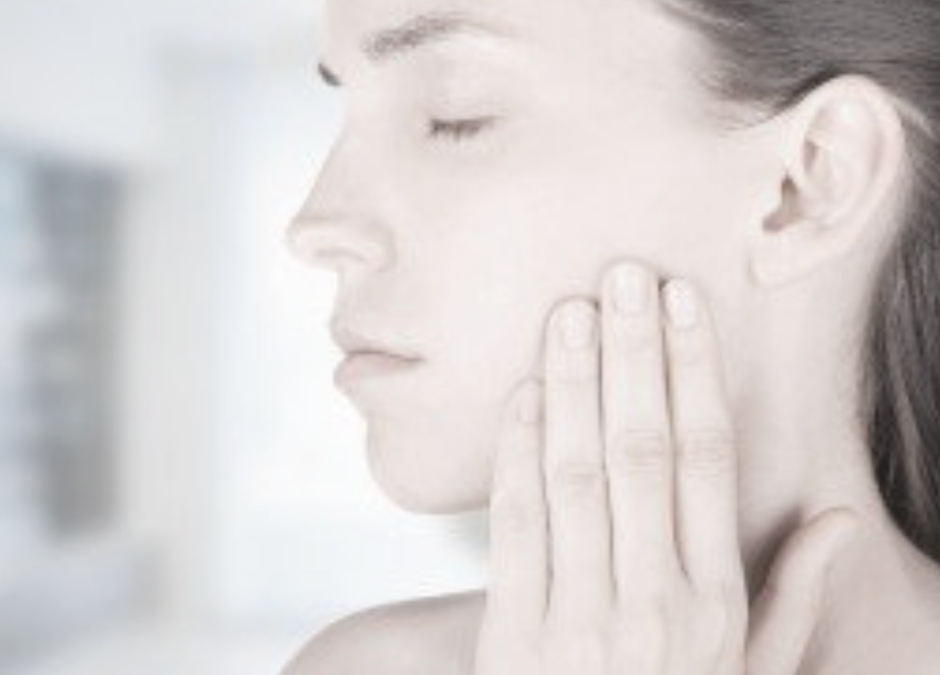In my journey to help people improve their health I often find that I go through phases where many new patients will come in with similar problems…it’s as if they all called each other and decided to come as a group. Lately, I found that many of my new patients need improved mobility of the facial bones, more specifically around the TMJ, which is short for Temporomandibular joint. Here is an exploration of the TMJ and how problems around it can manifest in day to day and how we can improve its mobility with manual osteopathy.
Clinical manifestation of TMJ dysfunctions
First of all, most people who come at Ananta needing help with their TMJ don’t come complaining about the TMJ. Some do but very few. Most people come in for something else, which can be anything. Lately, I’ve had a handful of new patients coming for general soreness, low energy, lower back pain, feeling like their posture is out of alignment, vertigo, concussion, tingling in the hands or just one hand, shoulder pain and so on.
What I found after doing a general clean up treatment of the musculoskeletal system is that some areas that were treated will remain restricted after getting their initial adjustments. The most common areas to remain restricted was the cranio-cervical junction, which is comprised of: 1) the base of the skull with the occipital bone, 2) its articulation facets that articulate with the Atlas bone or first cervical vertebrae and 3) the Axis, or second cervical vertebrae. Very often, we will find that the axis, which is a very mobile and adaptive vertebra, seems to be translated to one side of the neck. Upon investigation, patients will often admit that they always feel tight at the base of the skull and/or in the trapeze muscles of the neck going to the shoulders. They sometimes report that their chiropractor often adjusts the area.
More questions often reveal that the patient has a history of bite problems including:
• Clenching teeth at night
• Clicking in both TMJ or on one side
• Pain in closing or opening the mouth
• Wore braces
• Wore a retainer or should wear a retainer
• Sore jaw muscles in general
• Tension headaches
What commonly happens with these patients is that working only on the cranio-cervical junction doesn’t resolve the translated Atlas vertebrae or the compression on the cranium on the Atlas on one side. Further testing will often lead to find a mobility issue with the TMJ on the same side or bilaterally.
The Anatomy of TMJ
The TMJ as its full name states is the junction of the mandibular bone (your lower teeth bone), with the temporal bone (the one that hold your ears bilaterally). A small cartilage disk is located between the bones to allow smooth gliding in opening and closing the jaw and to prevent bones from damage over time. Furthermore, four ligaments and four muscles helps the joint hold its integrity and allow proper function when talking and chewing. Chronic misuse of the joint can lead to alteration of the disk, the ligaments and the muscles, which in turn create various degrees of discomfort and pain and alters proper opening and closing of the mouth.

What makes the mandible a big player in the biomechanical function of the upper body is the fact that it connects with the cranium, the cervical region and the thoracic region through articular, myofascial and visceral connections. Therefore, the mobility of the mandible with both its TMJ will affect the structure and function of the bite and how the head is positioned on the first cervical vertebra, thus influencing where the head sits in relationship to the entire body. Chronic problems of the TMJ and cranio-cervical articulation can then lead to misuse of the neck and shoulder muscles leading to chronic patterns of pain and discomfort. It may can affect the mobility of the shoulder girdle, which includes the upper ribs, the clavicles, shoulders and neck. The superior cervical ganglion also rests in the vicinity of the cranio-cervical junction and is responsible for the sympathetic innervation and function on the cranium, neck, upper thorax and arms. The proper positioning of the head on the neck has an impact on the biomechanical function of the cervical vertebrae, the disks in between vertebrae and the somatic cervical nerves of the brachial plexus.
The mandible articulates with the temporal bone a centimeter or so anteriorly to the ear. Restriction of mobility and compression of the joint may can affect the actual function of the ear and deregulate the pressure in the inner ear. Patients may have a history of chronic ear infections as kids or even in adult years, tinnitus, issues with equalizing ears when swimming or in altitude, vertigo and balance problems.

The anatomical notch found directly under the ear, in between both mandible and temporal bone, is the pathway for the circulatory bundle that exits and enters the head (a fascial bundle comprising the jugular veins, the vagus nerve and the carotid artery). Lets face it, these are very important structures: the carotid artery feeds the brain with fresh blood and nutrients, the vagus exits the head to innervate the visceral organ of the thorax and abdomen and the jugular veins drain the head from venous blood, therefore, carrying toxins and used blood back to the heart. Chronic problems of the TMJ and the cranio-cervical junction may be involved in problems with headaches, lightheadedness, vertigo and a myriad of visceral functions.
Anteriorly, the mandible is connected to the neck and thorax through various fascias attaching to the sternum but also the deeper structures of the body. For example, the trachea leading to the lungs, the esophagus heading down to the stomach, the thyroid gland as part of your endocrine system and the suspensory ligaments of the heart called pericardium.
Where do my TMJ and Bite Problems Come From?
This is the eternal question patients ask us; why do I have this problem? Realistically, it can be difficult to answer, as there are obviously many contributing factors such as genetic makeup and trauma to the head and face. However, many of the bite problems people experience can be traced back to their childhood when the bones of the head, face and neck established their adult position. So why do we have improper bite to start with?
When we are born, the bones of the cranium are in a very different position then in adults. The mandible is higher and forward and has much shorter vertical branches or ramus. This position allows babies to feed and breath at the same time without letting milk entering the nasal cavity…something adults cannot do easily. At approximately four months of age, babies start sitting on their own. In order to do this, they must control the anterior and posterior muscles of the neck so that their head doesn’t bob back and forth. At the same time, the bones of the cranium will further develop and move to a more vertical position: the mandible grows and moves down and the bones of the deep cranium change their orientation to their final adult position. If for some reason, such as, a difficult birth or use of instruments (such as forceps or even intra-uterine compressions of the face and cranium), the bones of the cranium may have restrictions that are unresolved. This may lead to an altered final positioning of the bones, thus, creating biomechanical patterns of the bite, cranial and cervical areas that can affect people for life. For example, the sucking of the thumb in children is often a sign of deep cranial bone mobility dysfunction. This prolonged suckling can then affect the upper teeth and may lead to the need to wear braces.
Many adults who clench their teeth will admit that they used to suck their thumb as a child. We can maybe hypothesize that clenching in adults is the pattern that replaces the sucking of the thumb, in the case of unresolved childhood deep cranial dysfunctions. Excessive drooling in babies and children can also be attributed to bite and TMJ issues. Needless to say that this period of our development is crucial for the biomechanical and physiological establishment of adult patterns.

TMJ and osteopathy
You now realize that the TMJ can affect many functions of the body and change its biomechanical patterns. This is why I always encourage parents to consult for their newborn even if the birth wasn’t particularly traumatic. Through osteopathic treatment parents can allow their babies and children to gain proper positioning of the cranium, which leads to appropriate establishment of sucking and latching leading to a better bite and of neuromuscular patterns. Their general wellbeing is improved. In the case where children need braces or orthodontic adjustment, an Osteopathic Practitioner can establish a gentle treatment plan that will allow the bones of the face, cranium, cervical and thoracic, and lets be honest here, the whole body, to adjust to the changes and molding of the jaw and bite; thus, preventing problems such as headaches, neck pain and the array of adult problems mentioned above in adulthood.
If you are an adult experiencing any of the aforementioned issues, we can definitely help you too. First, we will assess your entire body to start with. Then, the mobility of the TMJ will be assessed as well as the related ligaments and muscles. We will do a thorough examination of all the bones of the face and the cranium and evaluate their motion with the neighbouring neck and thorax for a fully holistic effect on the body. Many of the manipulations to help TMJ dysfunction are done intra-orally with the Osteopathic Practitioner putting fingers into the mouth wearing gloves. The techniques are gentle but affect the body in a very profound way. Many patients will comment on how “weirdly” different their head and neck feel after the treatment. Many patients come back saying how their feel their posture profoundly different.
Our Osteopathic Practitioners do not diagnose or practice medicine/dentistry, nor do we attempt to treat disease. If you are concerned about any medical and/or dental pathology and /or disease, always consult your physician/dentist prior to exploring Osteopathic Manual Therapy.
Feel free to call or email to enquire about how Osteopathic Manual Therapy can help you.

